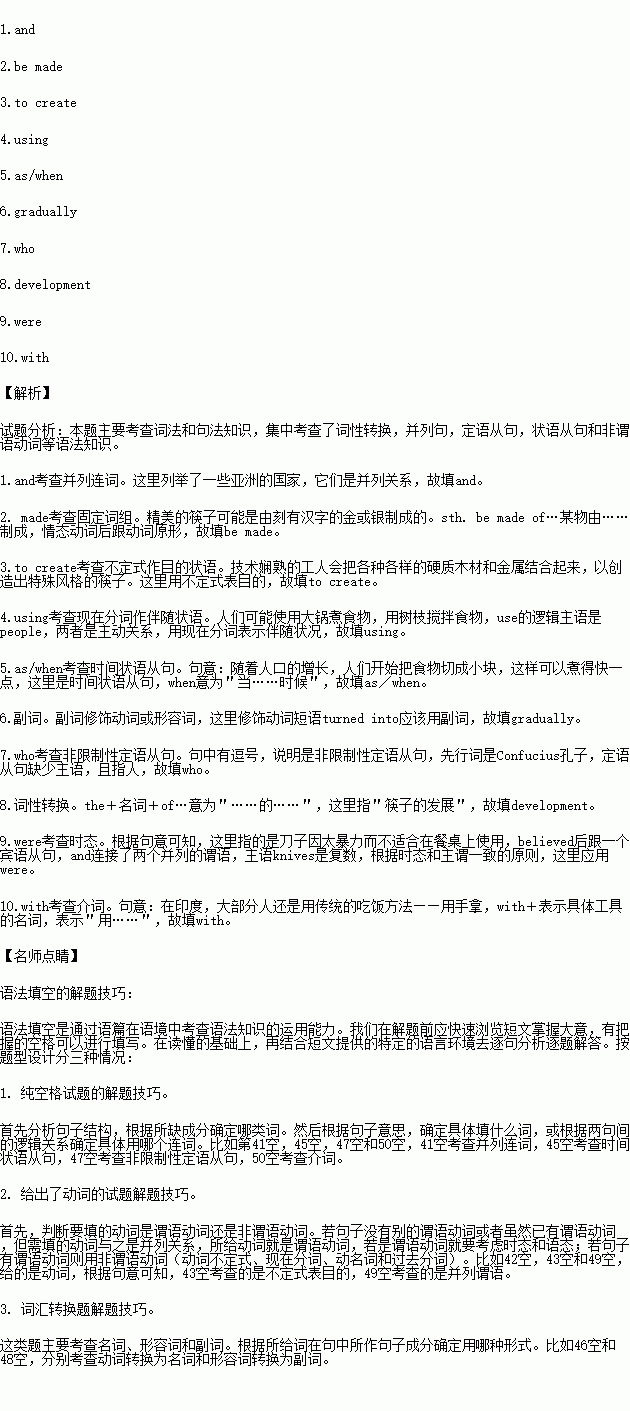题目内容
阅读下面材料,在空白处填入适当的内容(1个单词)或括号内单词的正确形式。
In much of Asia, especially the so-called "rice bowl" cultures of China, Japan, Korea, 1. Vietnam, food is usually eaten with chopsticks.
Chopsticks are usually two long, thin pieces of wood or bamboo. They can also be made of plastic, animal bone or metal. Sometimes chopsticks are quite artistic. Truly elegant chopsticks might 2. (make) of gold and silver with Chinese characters. Skilled workers also combine various hardwoods and metal 3. (create) special designs.
The Chinese have used chopsticks for five thousand years. People probably cooked their food in large pots, 4. (use) twigs(树枝)to remove it. Over time, 5. the population grew, people began cutting food into small pieces so it would cook more quickly.
Food in small pieces could be eaten easily with twigs which 6. (gradual) turned into chopsticks.
Some people think that the great Chinese scholar Confucius, 7. lived from roughly 551 to 479 B.C., influenced the 8. (develop) of chopsticks. Confucius believed knives would remind people of killings and 9. (be) too violent for use at the table.
Chopsticks are not used everywhere in Asia. In India, for example, most people traditionally eat 10. their hands.

